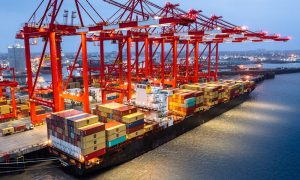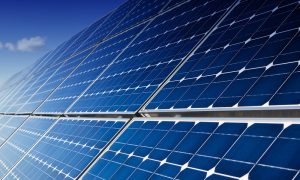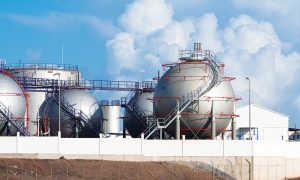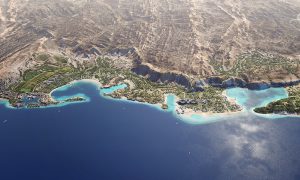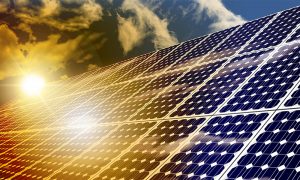Electric dreams
The power generation market heats up as manufacturers appear to be waking up to the huge potential of demand in the region

The need for power is being far outstripped by the region’s ability to provide the infrastructure to keep everybody plugged in. If the demand for power in the MENA region is to increase by 7% in the next decade then we’re going to be dependent on the often heard but rarely seen power generators that continue to provide critical and standby power for communities, buildings, hotels and, in the case of Himoinsa in Qatar, Ikea stores.
The Spanish power provider used this year’s Middle East Electricity show in Dubai to launch the HPCW 510 gen-set. Himoinsa builds generators to last and can be relied upon even, minute by minute, hour by hour, day by day.
The 500kW power generator which is mounted in a 10ft (3m) container provides “a considerable power density which allows extreme optimisation” of logistics and unit handling. The Power Cube will be distributed in the UAE, Saudi Arabia, Oman and Qatar via Himoinsa’s dealer Famco.
The generator provides 50 kw of power/foot and can be synchronised to provide more power. It has been equipped with a control unit that permits up to 32 units to be connected for operation in parallel. This means a rental company execute projects from 500kw to 16MW with a single machine. The unit also features noise and heat insulation, and is surprisingly spacey too, making servicing straightforward.
Guillermo Elum, sales and marketing director at Himoinsa told CMME that the genset’s size, ease of accessibility, and ability to be synchronised, is a potential game changer for rental companies in the region.
“When you’re making a generator you’re not making a rocket. But even though you’re not making a rocket you are making quite a sophisticated product. To make a compact model it’s not easy to find the right noise level, make sure it can synchronise, that it can work in a critical situation like a hospital. The size means that today rental companies can use it in Dubai today and then ship it to Saudi Arabia. A unit like that can be moved very easily.”
German engine and truck manufacturer MAN formally announced its entry into the Middle East’s power generation market with the launch of a wide range of diesel engines last month.
MAN says it will offer a wide range of efficient diesel engines with performance spanning from 180 kW to 1,117 kW.
MAN diesel engines for peak load compensation, emergency power supply and basic load supply have been successfully sold for many years now in Europe, Asia, South Africa and America. The head of its engine division says that Middle East customers can expect state-of-the-art technology.
“From now on, we will be able to offer our customers local services for a wide range of reliable and durable MAN engines” said Hubert Gossner, head of Power MAN Engines. ”Our broad product range enables us to offer dynamic engines with mechanical injection as well as with the most up-to-date common rail technology. MAN engines are characterised by their high power spectrum, sturdy design and compact construction, whilst their low life cycle costs also win over many customers.”
MAN says it is providing its “tried and tested, sustainable 6-cylinder in-line engines, as well as 8-, 10- and 12-cylinder V-type engines” for emerging markets. Depending on their type of operation in PRP (Prime Power), ESP (Emergency Standby Power), LTP (Limited Time Power) or COP (Continuous Power), the engines can be operated for a maximum of between 200 and 8,000 operational hours per year.
MAN chose to use the Middle East Electricity show in Dubai to demonstrate its 6-cylinder in-line engine, the D2676 LE22x, as well as the 12-cylinder V-type engine, D2862 LE22x, to showcase “a broad spectrum of its range of different engines and performance diversity”.
MAN claims the D2862 LE22x boasts an innovative new design and is the highest performance diesel engine for power generation.
“This 12 cylinder V-type engine from MAN has a displacement of 24.2 litres, with a 128 mm bore and a stroke of 157 mm. The V12 offers mechanical performance of 880 kW at 1,500 rpm and 1,117 kW at 1,800 rpm for power generation in Emergency Standby Power (ESP) mode. The use of modern technologies such as Common Rail Injection systems enables the efficient, 12-cylinder engine to achieve peak values for fuel consumption over a wide, application spectrum. Its dimensions of just 2,660 mm x 1,540 mm x 1,920 mm ensure its suitability for use as a container generating set,” said Gossner.
Volvo Penta has highlighted its dedication to the Middle East markets, with a speech given by Giorgio Paris, president of emerging markets, at the Middle East Electricity 2014 show press conference in Dubai. Paris said that the range of genset engines have been proven in extreme environments like the Middle East, while also introduce two new 16-litre engines (the TWD1652GE and TWD1653GE), completing the range of Stage IIIA-compliant power units.
“We’ve tested our genset engines in harsh conditions around the world — from Antarctica to Saudi Arabia — to ensure the best possible uptime and performance,” he said at the show. “Our powergen engines now come in a complete range of sizes and power levels that make them ideal for a wide variety of applications and working environments.”
The company undertakes extensive field testing, with manufacturing in one of the world’s most advanced factories to ensure the engines are safe to use and of top quality, he said. “Our global service and support network — which now includes a new Iraqi importer, Ittihadia — continues to keep customers’ engines in peak running condition throughout their lifecycles.”
He also stressed Volvo Penta’s low total cost of ownership, which is driven by the company’s emphasis on environmental care. “With a long service interval — up to 1,000 hours on the 13- and 16-litre models — and low fuel consumption, Volvo Penta-powered gensets help customers reduce costs and maximise return on investment.”
Paris discussed the company’s role as an independent supplier of engines to genset manufacturers around the world. Because Volvo Penta is not a genset producer, it does not compete with its customers — unlike other engine suppliers.
At the Dubai show, Paris said it was important to recognise the company’s efforts in the region.
“We’re here to show that we’re dedicated to the power generation market in the Middle East. We have a long history operating in this region, and we’ve teamed up with key players in the area to create a top-class dealer network here. Our offerings demonstrate that we have the right technology and services to meet our customers’ needs — even in an area with difficult working conditions, like the Middle East.”
Meeting the EU Stage IIIA engine emission regulations for generators, the new G80-IIIA (80 kVA prime power) and G100-IIIA (100 kVA prime power) generators have been launched by Doosan Portable Power. Sharing a similar design and characteristics to the larger G150-IIIA and G200-IIIA models launched in 2012, the new generators offer robustness and reliability, high performance and a wide choice of features to meet the needs of temporary power applications.
Of particular interest for the rental market, the G80-IIIA and G100-IIIA generators provide the highest flexibility available in the market, with an innovative fuel tank frame system offering a containment base integrated as standard in the frame to ensure 110% fluid containment capacity. The generators have a standard fuel capacity offering a minimum of 12 hours of autonomous operation (at 75% of the load), while a 24-hour onboard fuel tank configuration is available as an option.

